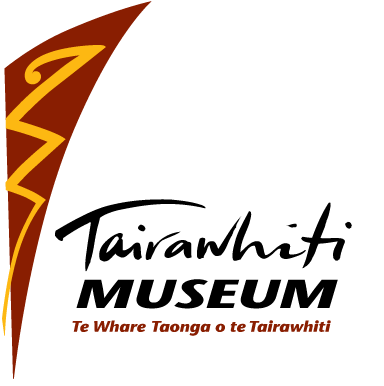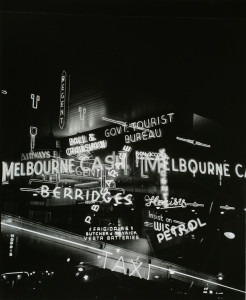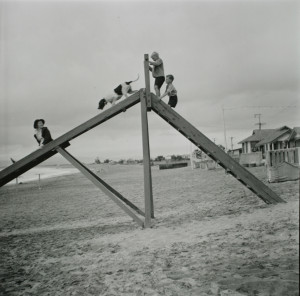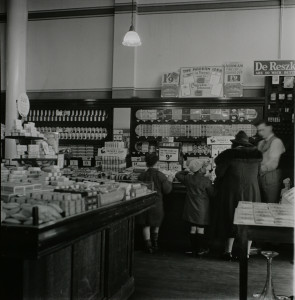Tairāwhiti WW2 Memories: Sirens and Black-outs
Tairāwhiti WW2 Memories: Sirens and Black-outs
Download as a PDF 3 World War II Sirens and blackouts
One of the first indications to Gisborne residents of the realities of the war came in December 1940 with the testing of the fire siren as an emergency alarm in case the National Military Reserve needed to be called up.[1] Later in the war, as using the fire alarm to warn against enemy action had been found unsatisfactory,[2] new warning sirens were situated in Te Hapara, Victoria Township (Waikanae) and Kaiti, with plans for two more in Whataupoko and Mangapapa, and two mobile sirens to be installed on cars.[3] The sirens were tested in March 1942, in order to find out over what area and how clearly they could be heard, and also so that people would know the difference between the sound of the emergency sirens and the fire alarm. It was suggested that parents should use the occasion for instructing children as to the meaning of the signals and the reason for the trial.[4] The testing of the sirens was carried out in conjunction with a black-out trial.
Initially emergency precautions focused on light reduction rather than a total black-out. On the evening of 3 February 1941 a group officials went out to sea in the Takitimu where they found that the mere cutting off of street lighting and advertising signs will not have the effect of blacking-out a coastal town, especially where hills are dotted with lighted homes.[5]
In March restrictions were placed on the use of high-powered lighting in the business and residential areas. This was the second stage of Gisborne’s black-out precautionary scheme, designed to reduce, direct illumination and sky-glow which might guide an enemy raider, approaching the New Zealand coastline.[6] Members of the public were advised to take the utmost precautions against street accidents arising from the reduction of lighting, and to prepare for the time when motor car lights, as well as public and private illuminations, are reduced to the minimum required by the national defence plan.[7]This went reasonably well, although there were a couple of oversights : the advertising sign of a business in Childers Road burned on until a report was received from a Gisborneite who had seen it from the Wharerata Hill.[8] The next step was the appointment of wardens – ironically, one of these was among the first black-out casualties after he fell into a ditch in Te Hapara and broke some ribs.[9]
Local sports clubs who had installed flood-lights were also affected by the light reduction scheme, and the Gisborne Amateur Athletic and Harrier Club applied to the council for a rent reduction to offset the expense incurred in installing lighting which it was now unable to use.[10] Some business owners were less co-operative and in April it was announced that
Neon advertising signs found burning after sunset and before sunrise, from to-morrow onwards, will be disconnected by direction of the Gisborne District Light-Reduction Committee, and will remain disconnected until the lighting restrictions emergency regulations, 1941, cease to operate.[11]
At the May Council meeting it was recommended that poles and kerbing should be painted, and railings erected to stop people falling into drains.[12] Another danger faced by pedestrians came from cyclists riding without lights. Complying with the black-out was used as a convenient excuse by some caught doing this, but they were reminded that by doing so they were in breach of the borough by-laws.[13] A hazard to motorists – at least, in the country – was stock wandering on the roads at night. It was suspected that stock owners were taking advantage of the opportunity to graze their stock on the roadside, and the poundkeeper was instructed to prosecute in all such cases.[14]
Not all Gisborne residents thought the lighting restrictions were reasonable, as a letter to the editor published in June 1941 makes clear:
May I voice a strong protest against the lighting restrictions now being enforced in the town. In the absence of any sane and adequate reason for their necessity I must say that so far as Gisborne is concerned they appear to be quite useless and futile. Gisborne is a totally undefended town and there is nothing whatever to prevent enemy bombers or raiders from blowing us to pieces, if they so desired, at any hour of the day. Surely it is wishful thinking to imagine they would wait for the inconvenient hours of darkness. We have been put to a great deal of inconvenience and expense apparently for no purpose, and in addition, the black-out, if continued, must inevitably result in serious accidents and probably loss of life. I am sure everyone is ready and willing to suffer inconveniences ten times greater than the black-out if they will help to win the war but surely these lighting restrictions which appear to be so unnecessary and absurd will only serve fa severely shake our faith in the ability of the authorities to guide us.[15]
Some local businesses were still not compliant either, and in July 1941 there were two prosecutions for breaches of the regulations, the offenders being fined 10s each.[16] However, a month later, when the assistant Dominion controller under the reduced-lighting regulations met with the Gisborne committee, he expressed the view that Gisborne’s application of the black-out regulations had come close to the official requirements.
There was though the issue of controlling the lights of cars parked on the beaches, and Mr. Bearman stated that wardens had full authority to request those in charge of cars so placed to cut off their lights. Fires built on the beaches by picnic parties also were under control, he pointed out, and much as the authorities regretted having to interfere with the enjoyment of crayfishing parties, such fires must be eliminated or so placed that they could not be seen from the sea.[17] A week after his visit, five car-owners were prosecuted and convicted for driving with non-compliant headlights.[18]
Although the lighting restrictions were sometimes referred to as black-outs, it was not until December of 1941 that Gisborne experienced its first trial black-out. For half an hour on the night of Monday 22nd, it would be an offence for any light to be showing. People were told that in every house there should be at least one room in which lights can be left burning without being in the least degree apparent from outside.[19] The black-out regulations were to be particularly strictly enforced in the beach areas of Waikanae, Kaiti and Wainui, and this applied to residents, motorists and cyclists. In January 1942 the Inspector of Police announced that police would be taking action against anyone in breach of the requirements.[20]
But by the end of the year, the lights of Gisborne shine again for the first time since the restrictions came into force requiring a complete black-out of buildings and but a mere glimmer of street lights.[21]The restrictions were lifted just in time for Christmas, and the town assumed its old brightness and the cheery glow from blue vapour lamps and coloured lights reminded the people that this year Christmas would be celebrated in a spirit that Equalled pre-war years.
– Christine Page, Museum Archivist
[1] The Gisborne Herald 10 December 1940
[2] The Gisborne Herald 3 April 1941
[3] The Gisborne Herald 10 January 1942
[4] The Gisborne Herald 7 March 1942
[5] The Gisborne Herald 3 February 1941
[6] The Gisborne Herald 24 March 1941
[7] The Gisborne Herald 17 March 1941
[8] The Gisborne Herald 20 March 1941
[9] The Gisborne Herald 26 May 1941
[10] The Gisborne Herald 26 March 1941
[11] The Gisborne Herald 3 April 1941
[12] The Gisborne Herald 7 May 1941
[13] The Gisborne Herald 9 April 1941
[14] The Gisborne Herald 16 July 1941
[15] The Gisborne Herald 13 June 1941
[16] The Gisborne Herald 30 July 1941
[17] The Gisborne Herald 14 August 1941
[18] The Gisborne Herald 21 August 1941
[19] The Gisborne Herald 16 December 1941
[20] The Gisborne Herald 6 January 1942
[21] The Gisborne Herald 19 December 1942




